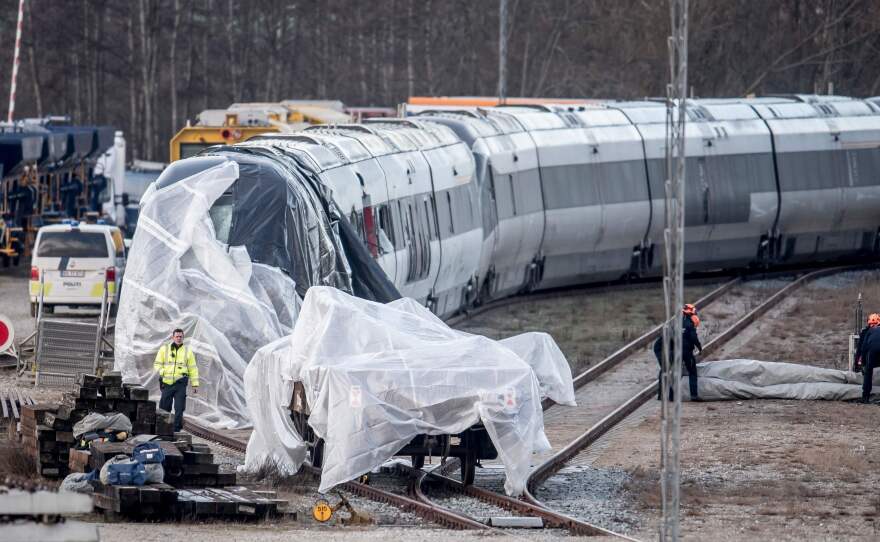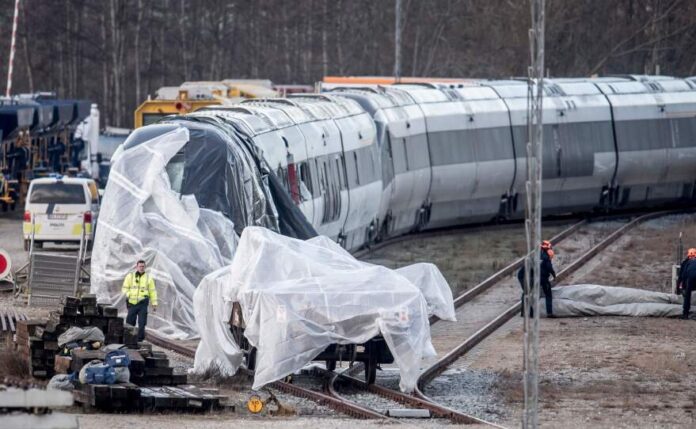Danish Train Accident Today: One Dead and Dozens Injured After Collision and Derailment
The Danish train accident today has left the country in shock after a passenger train collided with a slurry tanker in southern Denmark, killing one person and injuring dozens more. Authorities confirmed that a 60-year-old woman lost her life, while at least 27 passengers sustained injuries, including five in serious condition.
The collision occurred on a Friday evening between Tinglev and Kliplev, near Denmark’s border with Germany. The force of the crash caused at least two train carriages to derail, leaving passengers trapped and sparking a large-scale emergency response.
Danish Train Accident Today: What Happened?
According to police, the accident took place at a level crossing where the passenger train struck a slurry tanker, a vehicle commonly used to transport farm waste. The impact caused severe structural damage, with one carriage flipping onto its side.
Pictures from the scene showed passengers standing in shock along the tracks, while emergency teams worked overnight to clear debris and search for victims. A crane was deployed to lift derailed carriages, ensuring no passengers were left inside.
In total, 106 people were onboard during the collision, including a group of school pupils from Sønderborg. Fortunately, none of the children or their teachers sustained serious injuries. Authorities later confirmed that psychological support would be provided to the students following the traumatic experience.

Casualties and Injuries Confirmed by Authorities
Police confirmed that:
-
One woman (60 years old) was killed instantly in the crash.
-
27 passengers were injured, with five in serious condition.
-
Two victims remain critical in hospital.
In a statement, Danish officials said that while most of the injuries were minor, the situation remains fluid as some passengers may experience delayed medical complications.
Prime Minister Mette Frederiksen issued condolences, stating:
“My thoughts go out to the relatives, the many injured, and everyone currently affected by the accident. I hope that everyone gets the best possible help and support.”
Impact on Train Services and Travel
The national rail operator DSB immediately suspended services along the affected route, cutting off a key connection in southern Jutland. The agency Banedanmark confirmed via X (formerly Twitter) that cleanup operations are underway, but train travel in the area will remain disrupted until further notice.
For thousands of commuters, this disruption adds to the emotional weight of the tragedy. Authorities have urged passengers to seek alternative transportation and follow travel advisories through DSB’s official updates.
Eyewitness Accounts: Chaos and Shock
Several passengers described scenes of chaos following the collision. Witnesses reported feeling a violent jolt before carriages toppled and luggage flew across the cabins.
Local media captured footage of emergency workers guiding shocked passengers away from the wreckage, while others described parents desperately holding onto their children amid the confusion.
Danish Train Accident in Context
This Danish train accident today has reignited debates about railway safety in the country. Although Denmark is known for its modern rail infrastructure, accidents at level crossings remain a risk, particularly in rural areas where heavy agricultural machinery often intersects with passenger routes.
Experts have long warned that slurry tankers and other farm equipment can be hazardous if safety protocols are not strictly enforced. In response, the government may now face renewed pressure to improve crossing barriers and implement stricter monitoring systems.

Rail Safety Concerns in Europe
The tragedy in Denmark comes just months after several high-profile rail accidents across Europe, including deadly collisions in Greece and the Czech Republic. Transportation analysts warn that aging infrastructure, combined with increased freight traffic, is putting additional strain on railway systems.
The European Union has called for stronger cross-border railway safety standards, emphasizing better signaling technology and stricter enforcement of maintenance schedules.
For Denmark, this accident could serve as a wake-up call to accelerate investments in modernizing its railway system.
Support for Victims and Families
Local authorities have confirmed that families of the victims are being provided with counseling and financial assistance. Schools in Sønderborg also announced that psychologists will be available for students involved in the accident.
Community solidarity has been evident, with residents in nearby towns offering food, shelter, and transport to stranded passengers.
What Happens Next?
Investigators are working to determine whether human error, equipment failure, or negligence contributed to the crash. Initial reports suggest the slurry tanker was crossing the tracks at the time of impact, but details remain unclear.
The Danish Transport Ministry has pledged a full investigation, with findings expected in the coming weeks. If negligence is confirmed, legal consequences for the tanker operator or the railway authority may follow.
Until then, travel disruptions will continue, and safety measures at railway crossings will likely come under renewed scrutiny.

